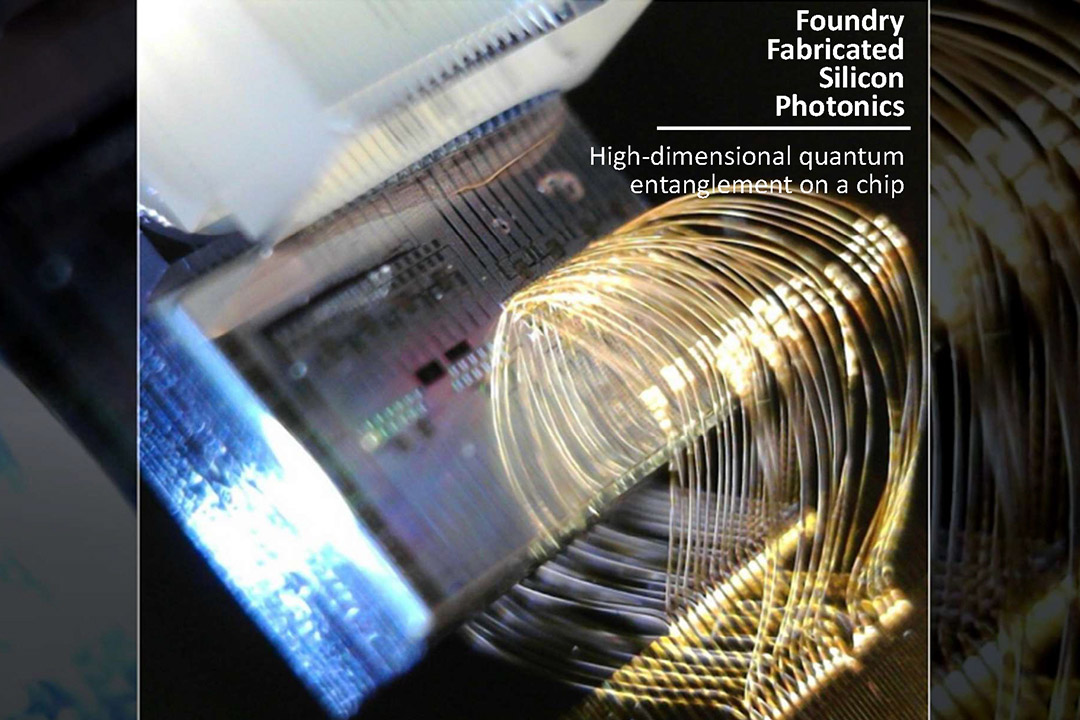Ph.D. student is lead author on paper published on cover of 'Optica Quantum'
Interdisciplinary research from the Center for Detectors focuses on entanglement in quantum information systems
Ph.D. student Evan Manfreda-Schulz’s first published paper was featured on the cover of Optica Quantum.
Microsystems engineering Ph.D. student Evan Manfreda-Schulz ’20 (physics) accomplished something many academic researchers aim for when his first paper was published on the cover of Optica Quantum.
The paper, “Generating high-dimensional entanglement using a foundry-fabricated photonic integrated circuit,” is a culmination of years of study in the realm of quantum information systems. The work was co-authored by J. Dulany Elliot ’23 (physics and computer science); Matthew can Niekerk ’23 Ph.D. (microsystems engineering); Daniel Proctor ’23 (physics), Mario Ciminelli, engineer in the Department of Electrical and Microelectronic Engineering; Tom Palone, reliability and packaging engineer in the Department of Manufacturing and Mechanical Engineering Technology; Christopher C. Tison, Air Force Research Laboratory; Michael L. Fanto '20 Ph.D. (microsystems engineering) Air Force Research Laboratory; Stefan F. Preble, professor in the Department of Electrical and Microelectronic Engineering; and Gregory A. Howland, assistant professor in the School of Physics and Astronomy. The work was supported, in part, by the Air Force Research Laboratory and the RIT-L3Harris Quantum Information Science and Technology Collaboration.
RIT has emerged as a leader in quantum technology, which leverages the behavior of quantum systems at the single particle level. Quantum resources such as entanglement, which is observed via correlations in the measurement statistics of disparate particles, are key to unlocking new possibilities and capabilities in computing, communication, imaging, and sensing.
“Entanglement is a resource for all sorts of things that we might want to use quantum information systems for,” explained Manfreda-Schulz. “Generating it is one part of the challenge, and figuring out how much of it you have is another.”
The team used a silicon photonic integrated circuit to generate 1.45 ebits of high-dimensional quantum entanglement. They documented how the system was designed, packaged, and calibrated using an array of four tunable photon pair sources. Then they described how they used an entanglement witness to quantify the resource they generated. The research represents an advancement towards the efficient deployment of quantum information systems built on the platform of silicon integrated photonics.
This research comes under the direction of RIT’s Center for Detectors, an interdisciplinary center that designs, develops, and implements photon devices for a wide range of scientific areas, and the Integrated Photonics Lab.
“I’m really grateful for everyone in the group,” added Manfreda-Schulz. “It’s not just something that I did, it’s our whole team. I’m appreciative of all the help I received along the way.”





